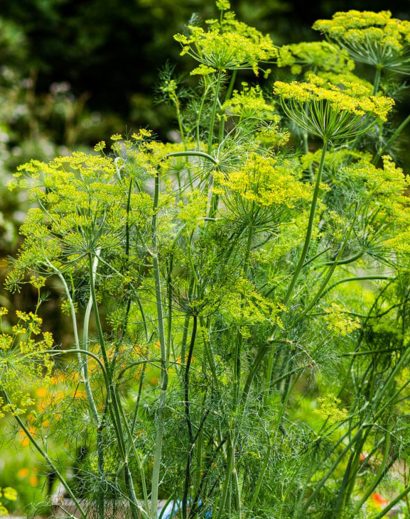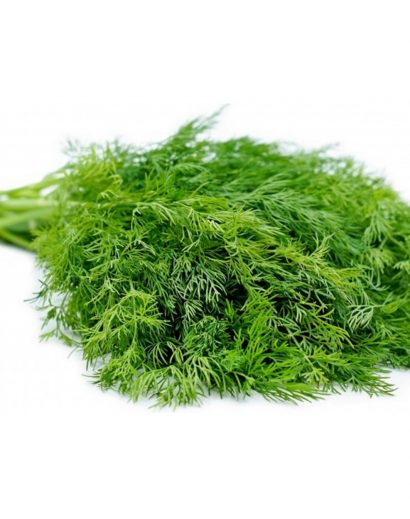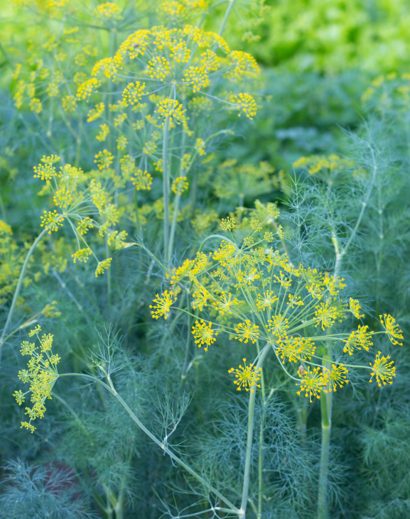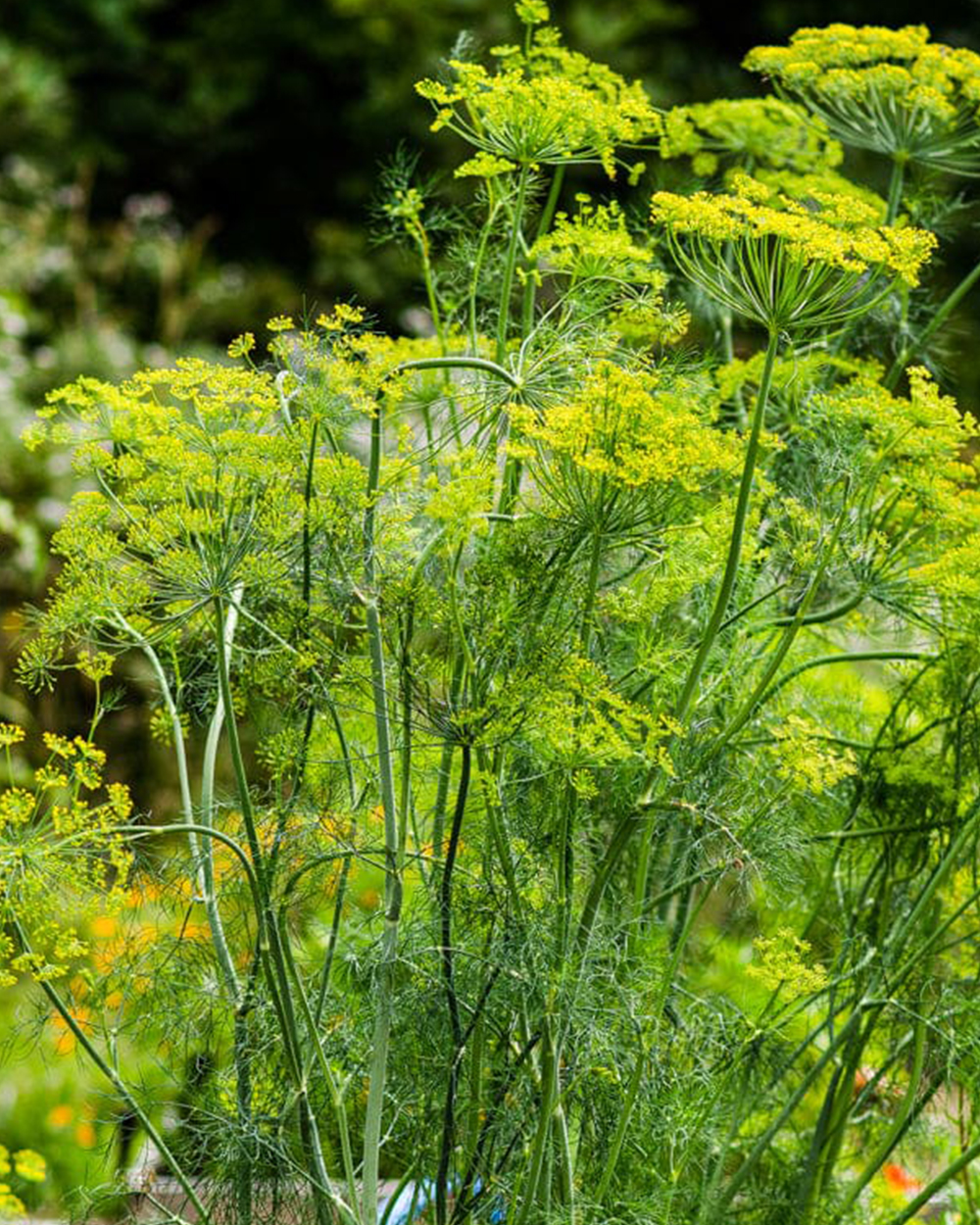Dill is a herbaceous annual plant (Anethum graveolens) that is commonly grown for its aromatic leaves and seeds, both of which are used in culinary and medicinal applications. Here’s a description of dill:
- Appearance: Dill plants typically reach a height of 2 to 3 feet (60 to 90 centimeters) and have slender, feathery, and delicate green leaves that resemble fern fronds. The leaves are finely divided into thread-like segments, giving them a lacy appearance. Dill leaves are bright green and emit a distinct, pleasant fragrance when crushed.
- Flowers: Dill plants produce small, umbrella-like clusters of yellow flowers that are arranged in dense, flat-topped inflorescences. These flowers are attractive to pollinators like bees and butterflies.
- Seeds: Dill seeds are oval-shaped, tiny, and light brown in color. They are the most prized part of the plant for culinary purposes and have a strong, aromatic flavor that is both slightly sweet and tangy. Dill seeds are often used as a spice or seasoning.
- Flavor and Aroma: Dill has a unique flavor profile characterized by a combination of sweet, citrusy, and slightly anise-like notes. Both the leaves and seeds contribute to this distinct flavor and aroma. Dill leaves are milder in flavor compared to the seeds.
- Culinary Uses: Dill is a popular herb in various cuisines around the world. It is commonly used to flavor pickles (dill pickles), as well as in salads, soups, sauces, and seafood dishes. Dill is a key ingredient in dishes like tzatziki, a Greek yogurt and cucumber sauce, and gravlax, a Scandinavian cured salmon dish.
- Medicinal Uses: Dill has been used for centuries in traditional medicine for its potential health benefits. It is believed to have digestive and soothing properties and has been used to alleviate digestive discomfort such as bloating and indigestion. Dill water, a solution made from dill seeds, has been used to treat infant colic and other minor digestive issues.
- Cultivation: Dill is relatively easy to grow and is commonly cultivated in home gardens and commercially. It prefers well-drained soil and full sun to partial shade. Dill plants can be grown from seeds and require regular watering. The leaves are typically harvested when the plant is young and tender, while the seeds are collected once the flowers have dried.
In summary, dill is a versatile herb known for its delicate, feathery leaves and flavorful seeds. It is widely used in cooking, particularly in pickling and dishes where its unique flavor can shine, and it has also found a place in traditional herbal medicine for its potential medicinal properties.





Reviews
There are no reviews yet.